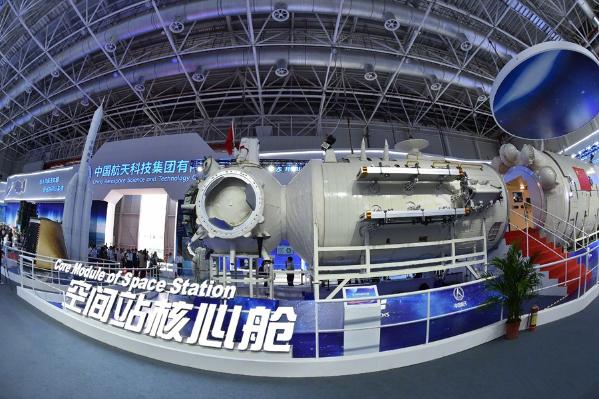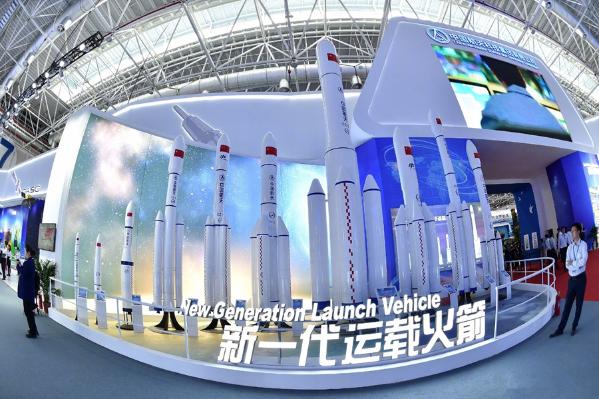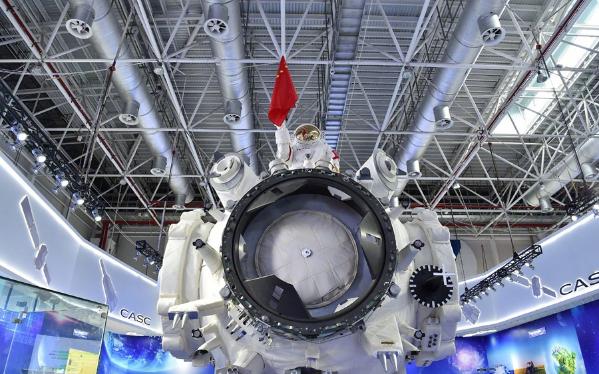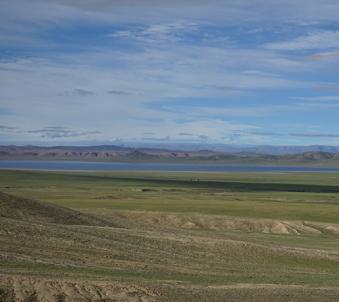Full-size model of China's core space station module debuts in Zhuhai
A full-size model of the core module of China's space station Tianhe made its debut on Tuesday at the 12th China International Aviation and Aerospace Exhibition (Airshow China) in Zhuhai, south China's Guangdong Province.

The core module of the "Tiangong," China's planned space station, has been unveiled for the first time at the 12th China International Aviation and Aerospace Exhibition, or Airshow China 2018, in Zhuhai, Guangdong Province, November 6, 2018. The "Tiangong" will be the "heavenly temple" which will allow Chinese researchers to explore space through the national space laboratory. Officials anticipate "Tiangong" should be completed sometime in 2022. [Photo: Xinhua]
The core module will mainly serve as the control and management aspect of the space station and for the astronauts' living conditions. It will have autonomous flight capability, support the astronauts' long-time stay in outer space and help them conduct experiments concerning aerospace medicine and space science.
The in-orbit construction of the space station is expected to be completed around 2022. It will be the country's space lab in long-term stable in-orbit operation.

The core module of the "Tiangong," China's planned space station, has been unveiled for the first time at the 12th China International Aviation and Aerospace Exhibition, or Airshow China 2018, in Zhuhai, Guangdong Province, November 6, 2018. The "Tiangong" will be the "heavenly temple" which will allow Chinese researchers to explore space through the national space laboratory. Officials anticipate "Tiangong" should be completed sometime in 2022. [Photo: Xinhua]
The space station will consist of a core module and two experimental modules, each weighing about 20 tonnes. It will accommodate three to six astronauts.
The designed lifespan of the space station is no less than 10 years, which can be extended by maintenance and repair work.

The core module of the "Tiangong," China's planned space station, has been unveiled for the first time at the 12th China International Aviation and Aerospace Exhibition, or Airshow China 2018, in Zhuhai, Guangdong Province, November 6, 2018. The "Tiangong" will be the "heavenly temple" which will allow Chinese researchers to explore space through the national space laboratory. Officials anticipate "Tiangong" should be completed sometime in 2022. [Photo: Xinhua]
The space station can be used to conduct space biology research and help cultivate fine species, probing disease mechanisms and biological medicine in order to improve people's health conditions.
Your Comment
Name E-mailRelated News
-
-
Dates for Chinese space missions revealed
A leading official with China's National Space Administration has revealed more detailed timelines for major Chinese space missions.
-
-
Europe, Japan send spacecraft on 7-year journey to Mercury
European and Japanese space agencies said an Ariane 5 rocket successfully lifted a spacecraft carrying two probes into orbit Saturday for a joint mission to Mercury, the closest planet to the sun.
-
-
Standards being set for Chinese space station
A technical committee is being established for setting up standards for China's planned space station, reports the China Manned Space Engineering Office on Sunday.
-
-
Japanese tycoon going on SpaceX rocket says he trusts Musk
The Japanese online retail tycoon who plans to travel to the moon on the SpaceX rocket says he respects and trusts Elon Musk as a fellow entrepreneur, despite his recent troubles.
-
-
U.S. to establish Space Force by 2020: Pence
U.S. Vice President Mike Pence said Thursday that the United States plans to establish a Space Force by 2020, an idea floated by President Donald Trump and questioned by many top officers at the Pentagon.







